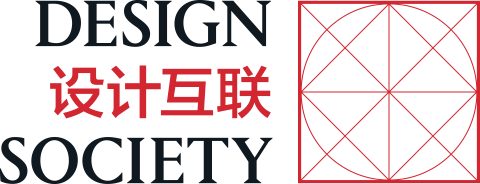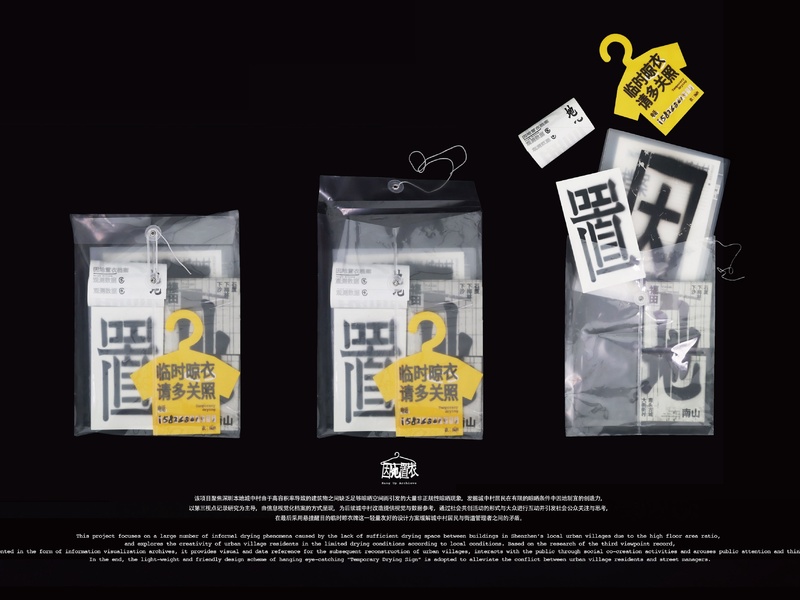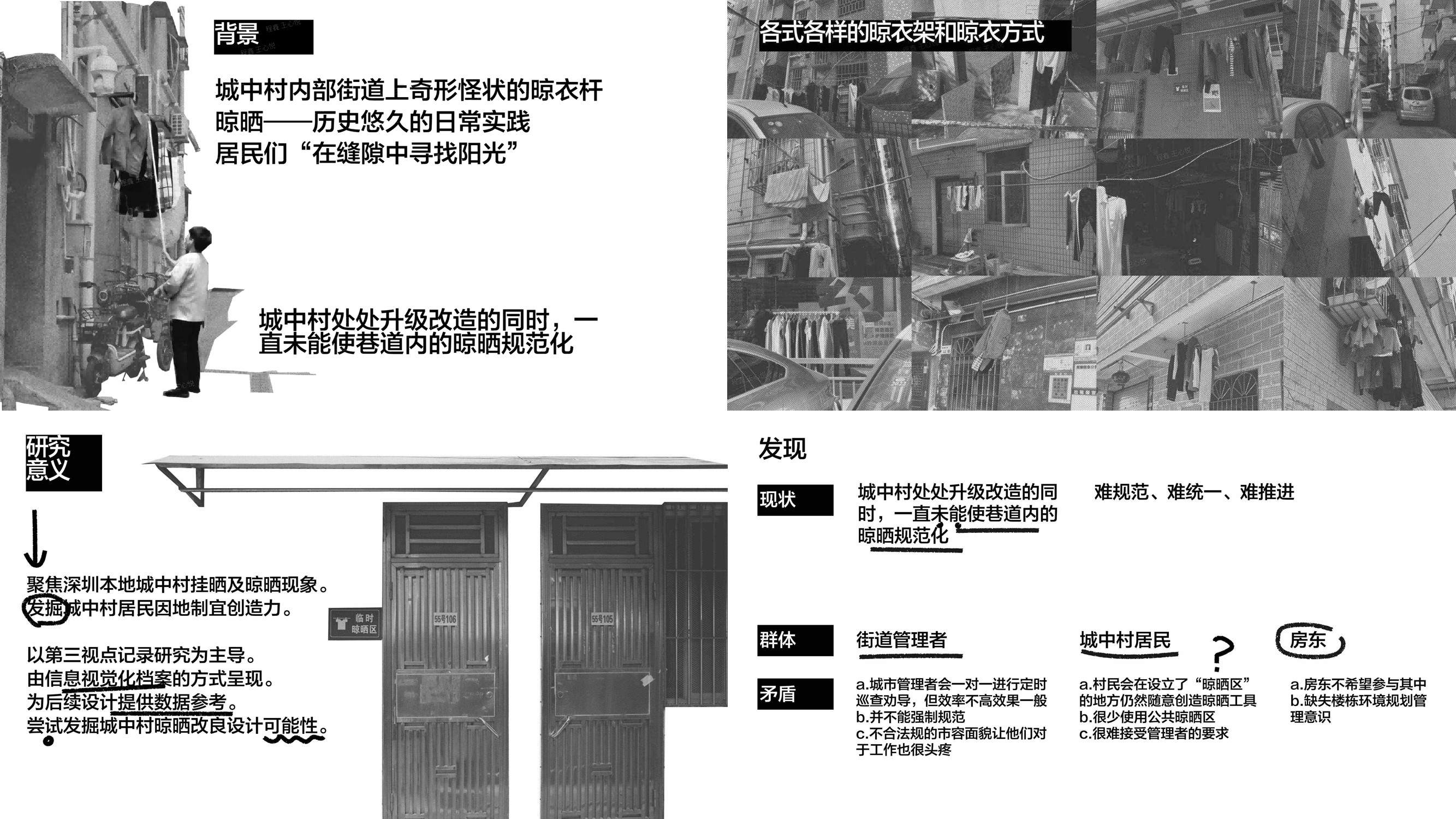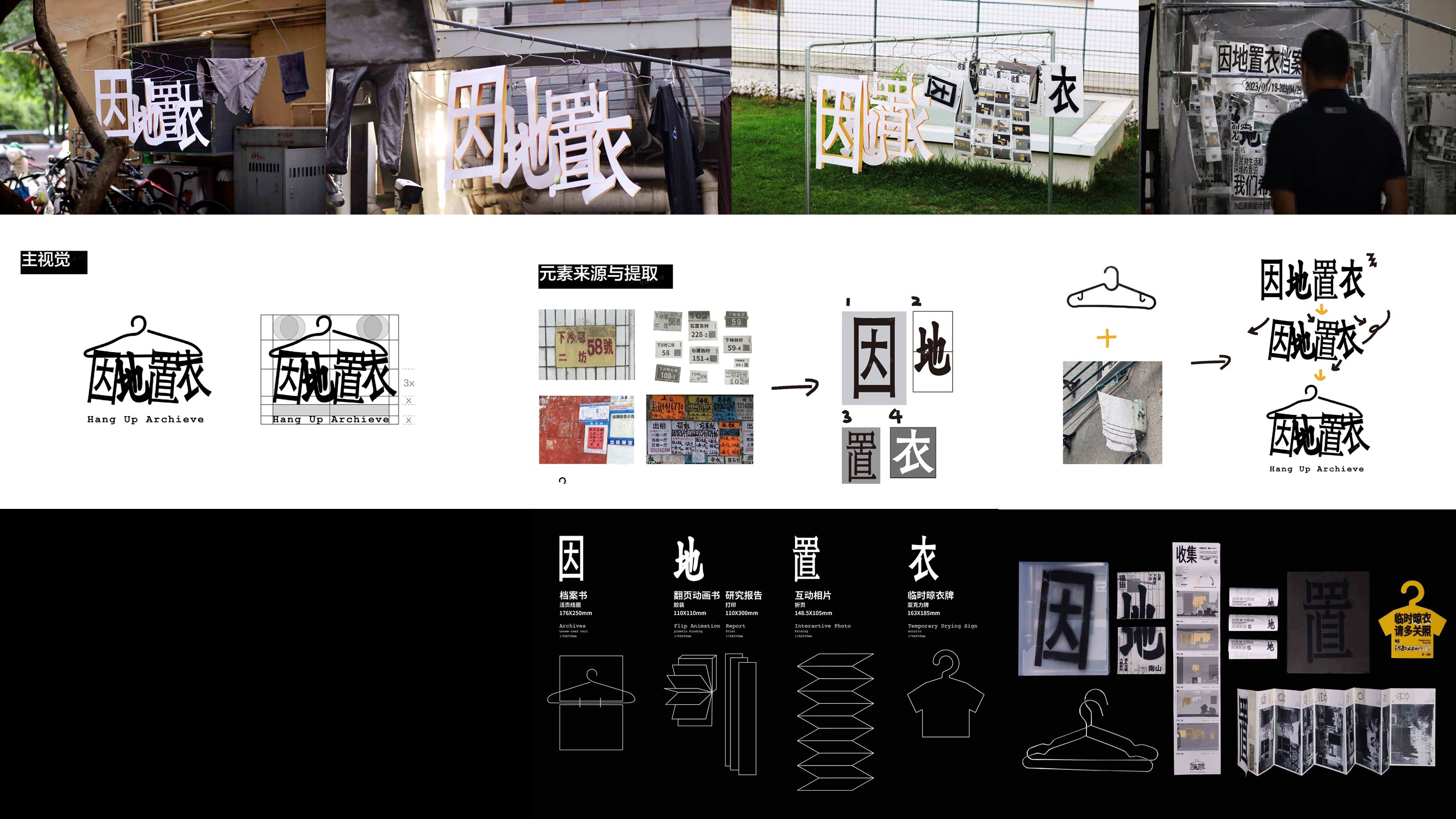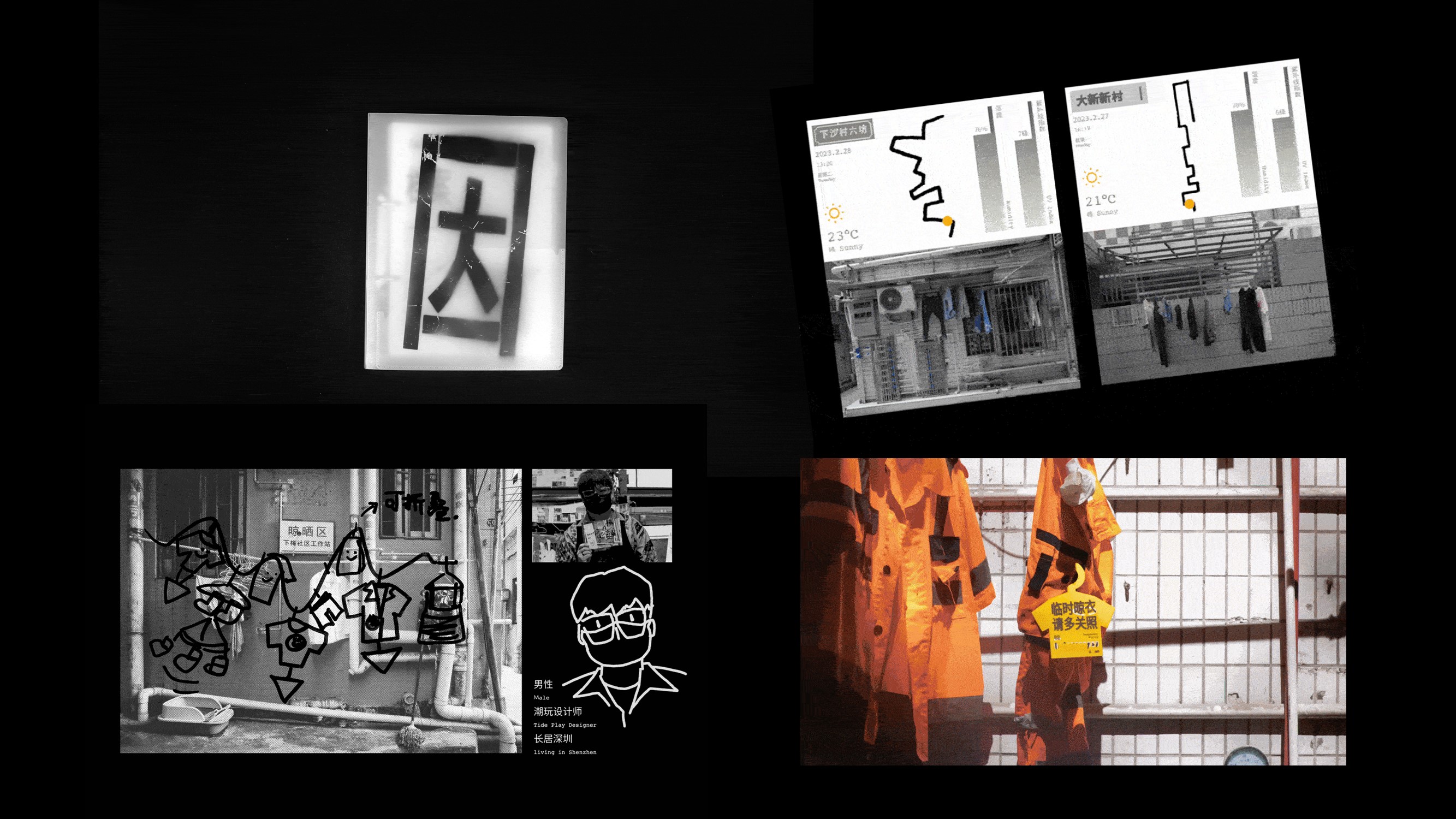因地置衣-深圳城中村晾晒视觉档案
该项目聚焦深圳本地城中村由于高容积率导致的建筑物之间缺乏足够晾晒空间而引发的大量非正规性晾晒现象,
发掘城中村居民在有限的晾晒条件中因地制宜的创造力。
以第三视点记录研究为主导,由信息视觉化档案的方式呈现,为后续城中村改造提供视觉与数据参考,
通过社会共创活动的形式与大众进行互动并引发社会公众关注与思考。
最后采用悬挂醒目的临时晾衣牌这一轻量友好的设计方案缓解城中村居民与街道管理者之间的矛盾。
This project focuses on a large number of informal drying phenomena caused by the lack of sufficient drying space between buildings in Shenzhen’s local urban villages due to the high floor area ratio, and explores the creativity of urban village residents in the limited drying conditions according to local conditions. Based on the research of the third viewpoint record, presented in the form of information visualization archives, it provides visual and data reference for the subsequent reconstruction of urban villages, interacts with the public through social co-creation activities and arouses public attention and thinking. In the end, the light-weight and friendly design scheme of hanging eye-catching “Temporary Drying Sign” is adopted to alleviate the conflict between urban village residents and street managers.

因地置衣-深圳城中村晾晒视觉档案

Part 1:Cause 因
“因”表示起因、原因,
该部分主要讲述该项目做该设计项目的起始原因与调研过程,从不同视角出发,客观地直面既存的情况,
一方面将现存事实记录下来,引发大众的关注与思考,作为该项目的引子,
一方面探索城中村居民乱晾晒与基层社区人员对城中村晾晒管理规范的行为原因。
This part mainly tells the starting reason and research process of this design project,
starting from different perspectives, objectively facing the existing situation,
On the one hand, it records the existing facts, arouses the attention and thinking of the public, and serves as the introduction of this project,
On the other hand, it explores the reasons for the random drying of urban village residents and the behavior of grassroots community personnel in the management of urban village drying.
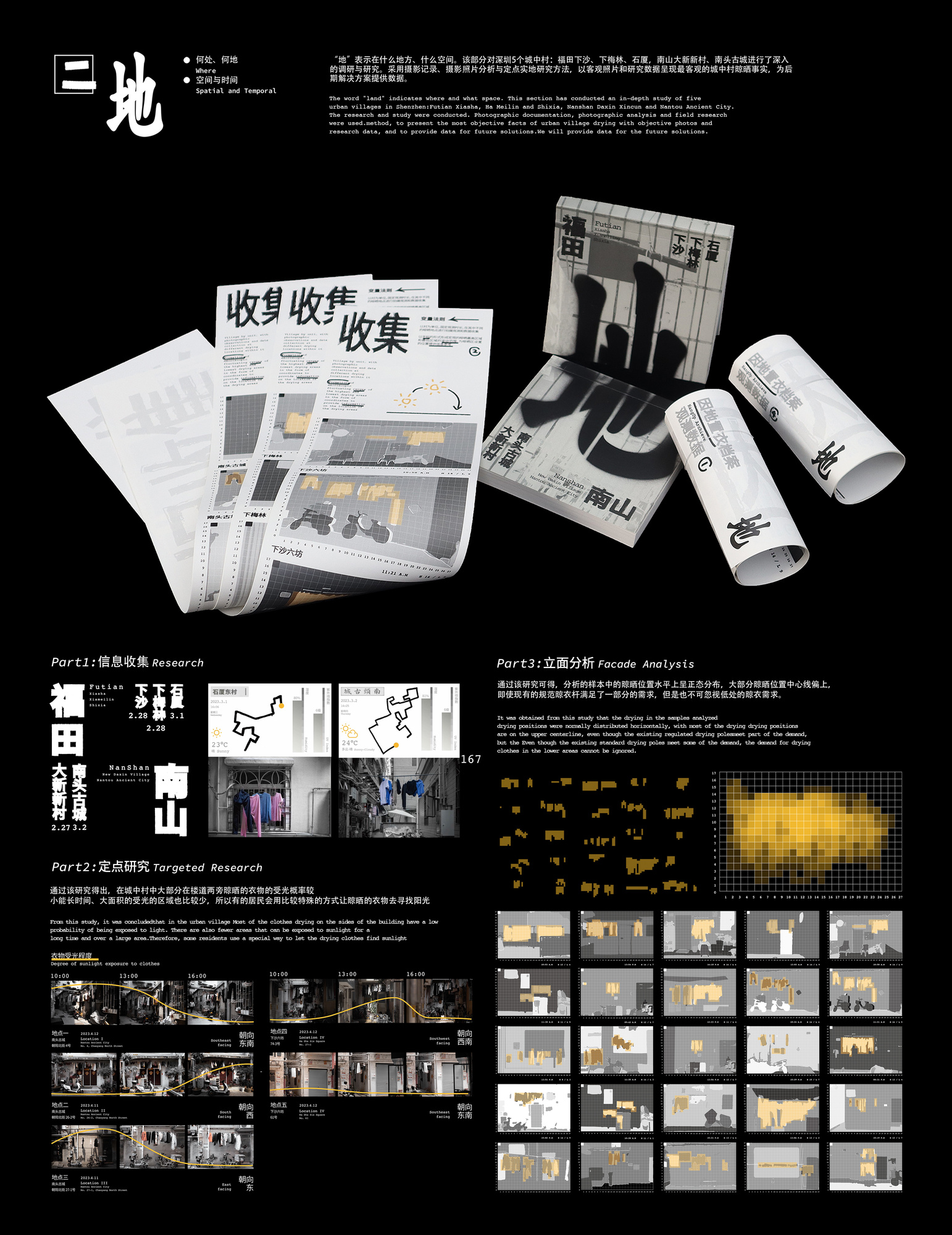
Part 2:Landscape 地
“地“表示在什么地方、什么空间。
该部分对深圳5个城中村:福田下沙、下梅林、石厦、南山大新新村、南头古城进行了深入的调研和研究。
采用纪实摄影分析与定点实地研究数据呈现最客观的城中村晾晒事实。
This section conducts in-depth research and study on five urban villages in Shenzhen:
Futian Xiasha, Xiameilin, Shixia, Nanshan Daxin Village, Nantou Ancient City.
Documentary photography analysis and fixed-point field research data are used to
present the most objective facts about drying clothes in urban villages.
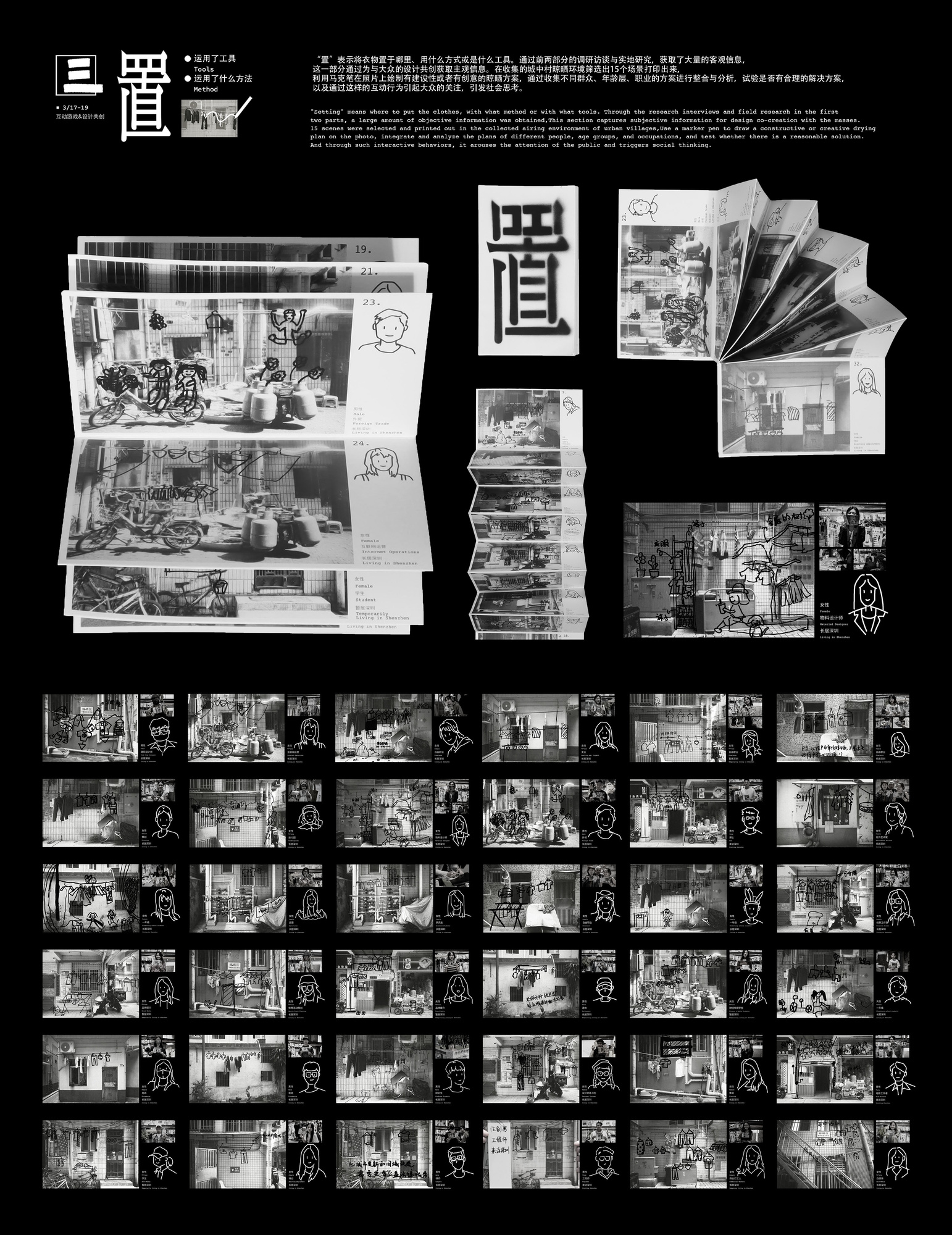
Part 3:Set 置
置,表示用什么方式或是什么工具将衣物置于哪里。
通过前两部分的调研访谈与实地研究,获取了大量的客观信息,这一部分通过为与大众的设计共创获取主观信息。
在收集的城中村晾晒环境筛选出15个场景打印出来,利用马克笔在照片上绘制有建设性或者有创意的晾晒方案,
通过收集不同群众、年龄层、职业的方案进行整合与分析,
试验是否有合理的解决方案,以及通过这样的互动行为引起大众的关注,引发社会思考.
“Set” refers to how or what tools are used to put the clothes where.
Through the survey interviews and field research in the first two parts, a large amount of objective information was obtained. This part obtains subjective information through design co-creation with the public.
Fifteen scenes were selected from the collected drying environments in the urban villages and printed out.
Constructive or creative drying plans were drawn on the photos with markers.
By collecting plans from different groups, age groups, and occupations, they were integrated and analyzed.
The experiment was conducted to see if there was a reasonable solution, and to attract the attention of the public through such interactive behaviors, triggering social thinking.

Part 4:Clothes 衣
“衣”是根据“临时停车”的灵感为城中村居民设计的“临时晾衣牌”
城中村居民在有限的晾晒条件下会进行非正规的晾晒行为,但是与街道管理者与市容管理条例发生冲突,
城中村居民可通过在“临时晾衣牌”上留下自己的电话,将牌挂在要非正规临时晾晒的衣服上,
在街道管理者有需要的情况下通知衣服的主人,缓解居民与管理者之间的矛盾。
"Clothes" is a "Temporary Drying Sign" designed for residents of urban villages based on the inspiration of "temporary parking".
The material 13 acrylic.Residents of urban villages have luted opportunities to dry clothes, so they will carry out informal drying behaviors.
However, there are conflicts with street managers and city appearance management regulations.
Residents of urban villages can leave their phone nunbers on the "Temporary Drying sign" to sign the card.
Hang it on the clothes that need to be dried tenorary an an intorm manner.
and notify the owner of the clothes when the street manager needs it, so as to ease the conflict between residents and managers.
补充资料
该项目聚焦深圳本地城中村由于高容积率导致的建筑物之间缺乏足够晾晒空间而引发的大量非正规性晾晒现象,发掘城中村居民在有限的晾晒条件中因地制宜的创造力。以第三视点记录研究为主导,由信息视觉化档案的方式呈现,为后续城中村改造提供视觉与数据参考,通过社会共创活动的形式与大众进行互动并引发社会公众关注与思考。最后采用悬挂醒目的临时晾衣牌这一轻量友好的设计方案缓解城中村居民与街道管理者之间的矛盾。
This project focuses on a large number of informal drying phenomena caused by the lack of sufficient drying space between buildings in Shenzhen’s local urban villages due to the high floor area ratio, and explores the creativity of urban village residents in the limited drying conditions according to local conditions. Based on the research of the third viewpoint record, presented in the form of information visualization archives, it provides visual and data reference for the subsequent reconstruction of urban villages, interacts with the public through social co-creation activities and arouses public attention and thinking. In the end, the light-weight and friendly design scheme of hanging eye-catching “Temporary Drying Sign” is adopted to alleviate the conflict between urban village residents and street managers.
深圳快速发展留下了许多城中村,成为最佳廉租房选择。居民面临狭小巷道中的晾晒难题,也激发了创意自制晾衣工具。他们发现新的晾晒区域,自制特殊工具。尽管受限,居民不任衣物潮湿,不断寻找最佳晾晒条件,在缝隙中找阳光,在现有的环境中“因地置(制)衣(宜)“。这一市井智慧与管理者维护市容的诉求形成矛盾——前者视其为生活艺术的延伸,后者认定是安全隐患。
整体作品利用了书籍和纪实影像的方式呈现,书籍用从文具店买来的活页本进行手作装帧,使用了翻页动画书的方式去呈现我们调研的地图路径动画;用最简单的马克笔给到社会大众在我们打印的城中村照片中去扮演”晾晒设计师“,将他们认为合理的晾晒建议画下来;喷漆封面与文件袋装帧刻意保留粗粝手工感,将衣架装入书籍中如同城中村晾衣现场;我们的研究项目通过纪实影像和中立视角,用动效的方式表达研究数据,以此引发对城市治理中人本精神与制度规范平衡点的思考。
作品曾获纽约Yound One‘s ADC 设计向善(Design for Good)优异奖(Merit);GDC Award 社会实践类铜奖;Design360年度毕设Top100等,在西岸艺术中心、海上文化艺术中心展出。
Shenzhen's urban villages, vital for affordable housing, showcase residents' ingenuity in adapting to limited spaces through creative drying solutions. While residents view these adaptations as practical living art, city managers see them as urban aesthetic and safety concerns. Our project explores this tension through handcrafted books and documentary visuals, using simple materials and public input to reflect the villages' resourcefulness. The project, recognized with awards like the Young One's ADC Design for Good Merit Award and the GDC Social Practice Bronze Award, has been exhibited at venues including the West Bund Art Center, highlighting the balance between grassroots innovation and urban governance.
团队均来自深圳大学视觉传达设计专业本科毕业,程鑫,深圳大学视觉传达设计专业在读硕士,深圳大学国家形象研究中心(NIRC)研究助理,主攻在地文化研究与当代视觉转化,擅长动态视觉与文化创意设计。曾获第五届宝安文创设计大赛金奖、鹤湖国际海报展铜奖、KTK靳埭强设计奖、白金创意设计大赛等专业奖项14项。学术研究聚焦数字媒介语境下的视觉叙事创新,实践成果获,王心悦,英国爱丁堡大学研究生,主要研究视觉传达设计领域的思维转化与排版创新,团队作品曾获GDC23铜奖、Design360毕设Top100、纽约Young one‘s ADC优异奖等国际化奖项。
